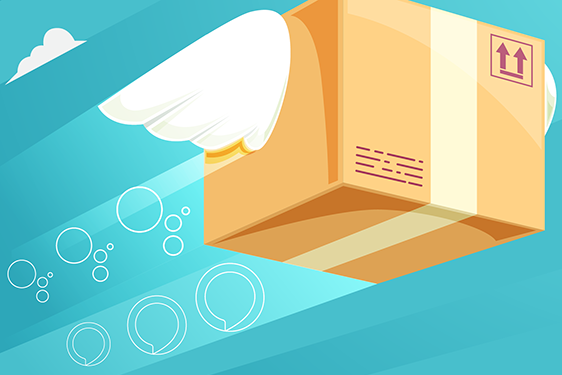Can Your Assistant Deliver?

In the old days of corporate America an “assistant” would bring you coffee. Today the “assistant” is Alexa or Google or some other voice assistant, and they don’t directly bring you coffee…yet.
From Music to Food Ordering
Over 30% of U.S. adults now have at least one smart speaker, 60% have used a voice assistant on a smartphone, and the market penetration continues to grow. Currently people use their voice assistants for a lot of music playing, alarm setting and general queries. Another trend is occurring in parallel to the growth of voice assistants, and that is the market for ordering ahead for food to go.
Walmart already allows orders through Google Assistant, and Alexa Skills have been built for ordering from dozens if not hundreds of restaurants. A new survey from The MDR Group and Progressive Business Insights shows more than two-thirds of adults are interested in using voice assistants to arrange food orders.
In addition, millennials are increasingly placing app -based orders and picking up the food to go. Delivery is growing too with companies duking it out to be the leader in meal delivery, grocery delivery, package delivery, and more. And not just delivery but RAPID delivery and FREE delivery. Amazon is already there with the huge success of their Prime program that enables most items for same or next day delivery at no charge.
A Voice Commerce Point of Entry
These three trends of voice assistants, order ahead, and delivery are all coming together. Google, Amazon, and other tech giants that make popular consumer voice assistants have very far reaching plans. They want to generate money from assistants not just off of media services but also from purchasing through both advertising and selling products. Consumers have just started placing orders through assistants, but the behavior is expected to grow.
This explains why payment and delivery is such an important piece of the puzzle for these giant corporations. They want to be the end-to-end supplier from browsing, advertising, and purchasing, to payment and delivery. Facebook, Amazon, Google, and Apple all have payment programs and financial payment partnerships in place. I suspect they are also all eyeing transportation and delivery.
Google has its autonomous driving unit Waymo. Amazon initially used UPS, USPS, and FedEx for deliveries, but today their internal delivery business covers half or more of their deliveries. This alone could account for 25% of all ecommerce deliveries. And then there’s the investments in autonomous drones, logistics, and warehousing.
It’s no wonder traditional giants like McDonalds and Walmart are heavily investing in in-house technology. They know they need to compete with the tech giants. It’s no longer just a matter of offering a good product at a good price in a brick and mortar store. Consumers want a fast easy transaction without having to get up…just talk and wait for a ripping fast delivery!
Todd Mozer is CEO of Sensory.








